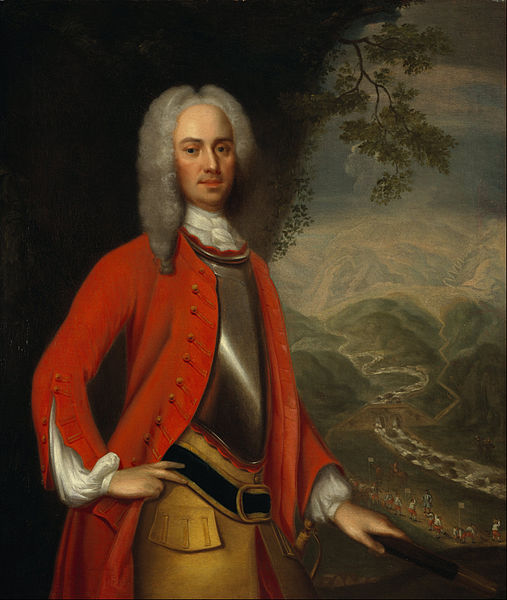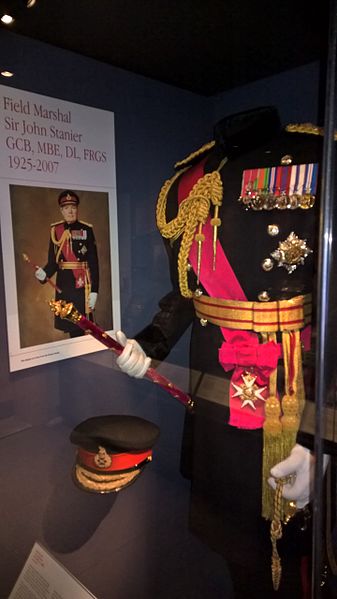Field Marshal George Wade was an Anglo-Irish British Army officer who served in the Nine Years' War, War of the Spanish Succession, Jacobite rising of 1715 and War of the Quadruple Alliance before leading the construction of barracks, bridges and proper roads in Scotland. He went on to be a military commander during the War of the Austrian Succession and Commander-in-Chief of the Forces during the Jacobite rising of 1745.
Field Marshal George Wade
Image: George Wade signature
Ruthven Barracks, Kingussie
Section of Wade's military road between Inverness and Kingussie, built in the wake of the 1715 Jacobite rebellion
Field marshal (United Kingdom)
Field marshal (FM) has been the highest rank in the British Army since 1736. A five-star rank with NATO code OF-10, it is equivalent to an Admiral of the Fleet in the Royal Navy or a Marshal of the Royal Air Force in the Royal Air Force (RAF). A Field Marshal's insignia consists of two crossed batons surrounded by yellow leaves below the Tudor Crown. Like Marshals of the Royal Air Force and Admirals of the Fleet, Field Marshals traditionally remain officers for life, though on half-pay when not in an appointment or retired. The rank has been used sporadically throughout its history, and was vacant during parts of the 18th and 19th centuries. After the Second World War, it became standard practice to appoint the Chief of the Imperial General Staff to the rank on his last day in the post. Army officers occupying the post of Chief of the Defence Staff, the professional head of all the British Armed Forces, were usually promoted to the rank upon their appointment.

The Earl Roberts painted 1906 in the full dress uniform of a Field Marshal in the British Army
Field Marshal's uniform and baton (pertaining to the late Sir John Stanier) on display in the Royal Scots Dragoon Guards Museum, Edinburgh Castle.
Image: 1st Earl Of Orkney
Image: John Campbell, 2nd Duke of Argyll and Duke of Greenwich by William Aikman








